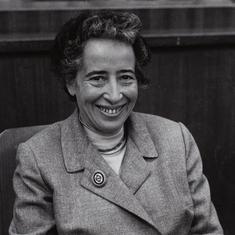“The shape of power”, it begins, “is always the same; it is the shape of a tree.” Naomi Alderman’s The Power is a book about a world order turned upside down overnight – women have suddenly gained a genetic advantage over men. It begins with teenage girls around the age of fifteen. They are able to create and wield lightning in their hands. Alderman introduces them to us as girls defending themselves against violence and violation. These girls don’t know what they’re inflicting on their tormentors till after the damage is done.
Slowly, the ability to create and weaponise bodily electricity spreads through womankind. Every female baby born to the new world has the power. It’s a crisis – or is it?
At first, the crisis appears to be containable. Babies are tested in hospitals. Female government employees are mandatorily tested to weed out those who have the power. Men cross the street when they see girls approaching. Boys and girls are sent to separate schools.
But as with all shifts of power, the new world is not contained by the old one for very long. Horrifying videos begin to emerge of girls electrifying each other, of sex slaves rising against the men and the institutions who have abused them. Alderman builds a world where I felt I was feeling my way around like in the dark. What I knew of hierarchy, of oppression, of danger and of survival was proven false. It took a few chapters for it to sink in that the world Alderman imagined was not going to be gentle.
Might power wield people instead?
What appears to have all the makings of a feminist utopia turns out to be an unflinching interrogation of power. The book has four central characters. Allie is a foster child who survives multiple foster families, each worse than the other, with the help of a voice in her head. Roxy is the daughter of a powerful British-Jewish gangster whose mother has been murdered because of a gang-related grudge. Allie and Roxy find themselves in a convent of nuns who are sheltering young women who are being persecuted for their new-found ability to wield lightning.
Allie transforms into Eve when the house discovers that she has a healing touch that temporarily takes away ailments. At the urging of the voice in her head, Eve leads a quiet, shocking reinterpretation of the Bible in this stunning exchange:
“Eve says, ‘Jesus is the son. But the son comes from the mother. Consider this: which is greater, god or the world?’
They say, for they have learned this already from the nuns, ‘God is greater, because god created the world.’
Eve says, ‘So the one who creates is greater than the thing created?’
They say, ‘It must be so.’
Then Eve says, ‘So which must be greater, the Mother or the Son?’”
With the help of Roxy, Eve builds a powerful Christian organisation funded by mafia money that subscribes to the idea of female supremacy.
Margot is a Mayor who is constantly belittled by the male Governor of her State. She has a fifteen-year-old daughter who has passed the power onto her. But this is not known to the world. She slowly rises through the political ranks.
Tunde, the sole man in the main cast of characters, is an enterprising Nigerian journalism student who travels around the world, visiting places like Saudi Arabia, Moldova, and Delhi, covering the growing revolution of women who want to take back a world that has been historically denied to them. The Power follows these four characters in a changing world. As their fortunes rise, it becomes clear that this alone will not insulate them from a violent takeover where neither the chosen nor the displaced will settle into the new order peacefully.
The more things change…
The first time I encountered Naomi Alderman was in a conservative Jewish neighbourhood in North London where her novel Disobedience is set. I was drawn in by her intricately detailed world and her keenly drawn characters – she could make me relate to deeply religious Jews. In The Power, she draws from the same, intuitive knowledge of people to create a disturbing book that has me questioning what I know of women and men.
As she wrote this book, Alderman was mentored by Margaret Atwood to whom the book is dedicated. Similar to her mentor’s dystopian masterpiece, The Handmaid’s Tale, this text doesn’t offer consolatory or definitive conclusions about gender. The Power is not an easy book to step away from.
When the violence and cruelty that populate our world are mirrored in a world turned on its head, it is unsettling to see how similar the two worlds are. Returning to the shape of power, Alderman says, “It is the shape that lightning forms when it strikes from heaven to earth.” The image of a world singed from its core to its branches is an apt depiction of the one Alderman has created.
This work of “feminist science fiction” has won the 2017 Bailey’s Prize for Women’s Fiction, edging out novels like the immensely popular Do Not Say We Have Nothing by Madeleine Thien. In a world where political futures are more unpredictable than ever before, Power is has you biting your lower lip as you ask yourself at what point the world we occupy goes beyond redemption and repair.
It isn’t surprising that that television rights for the book have already been sold and that five ten-episode seasons of Alderman’s intricately plotted world are being planned. One of the glaring absences is a deliberation on other determinants of power – race, religion, nationality, sexual orientation, trans identities. Do men of colour suffer the same fate as their white counterparts? Are trans-people and inter-sex people treated more fairly? Do homosexuals have equal rights? Perhaps the TV series, which intends to expand on the ideas in the book, will address these issues.

The Power, Naomi Alderman, Penguin Books.










